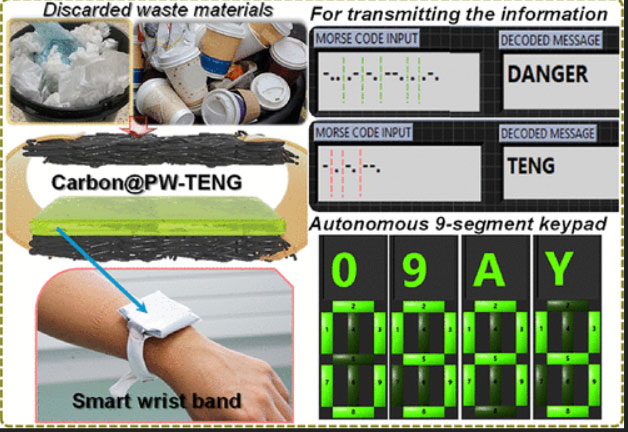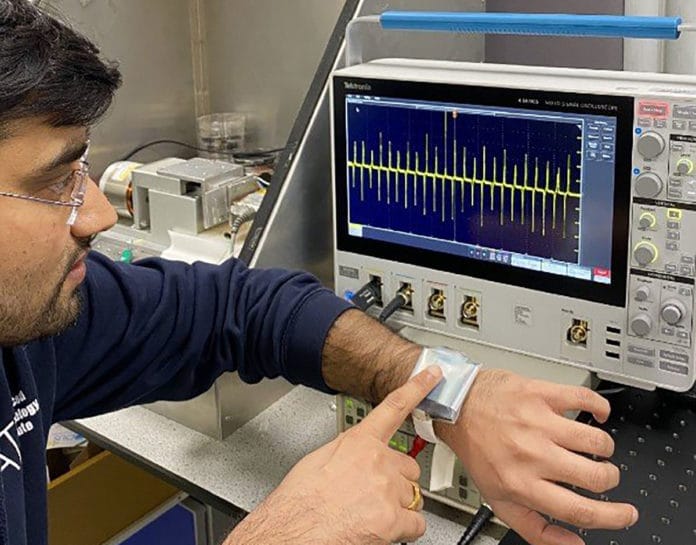E-waste or electronic waste produced by plastic, toxic, and semiconducting components of existing electronic devices is dramatically increasing environmental pollution. When it is dumped into landfills, toxic materials can seep into the soil and groundwater, affecting not only our health but also land and sea animals.
To overcome these issues, the use of eco-friendly materials for designing such devices is attaining much attention. Researchers at the University of Surrey have unveiled a new wrist device made of discarded paper wipes and plastic cups that runs on energy harvested by the wearer’s movements. The team is now focusing on plans to use the technology in smartwatches.
“It won’t be long until we have to ask ourselves which of the items we own are not connected to the internet. However, the current internet-of-things (IoT) revolution highlights the simple fact that our planet doesn’t have the raw resources to continue to make these devices which are in such high demand,” said Dr. Bhaskar Dudem, project lead and Research Fellow at the University of Surrey’s Advanced Technology Institute (ATI).

The wearable device is ‘self-powered’ thanks to materials that become electrically charged after they come into contact with one another. These materials, also known as Triboelectric Nanogenerators (TENGs), use static charge to harvest energy from movement through a process called electrostatic induction. The TENG is constructed from plastic waste and carbon-coated paper wipes collected from a waste bin.
The team initially concentrated on proving the functionality of the recycled TENG itself, showing it could generate enough energy to power low-power electronic devices. Later, the device was used to generate a Morse code from a wearable for autonomous communication. With further redesigning, a 9-segment keyboard is developed using nine-TENGs, connected to an Arduino controller to display the 9-segment actuation on a computer screen.
The device is expected to have an impact on future self-powered sensors and internet of things systems. The developers believe their energy-harvesting wearable device could be a future game-changer for the consumer, medical and security sectors.
“The core mission of the Advanced Technology Institute is to help build a world where clean energy is available to all. Our energy-harvesting technology embodies this key mission, and we stand ready to work with industry to ensure this technology reaches its full potential,” said Professor Ravi Silva, Director of ATI at the University of Surrey.
